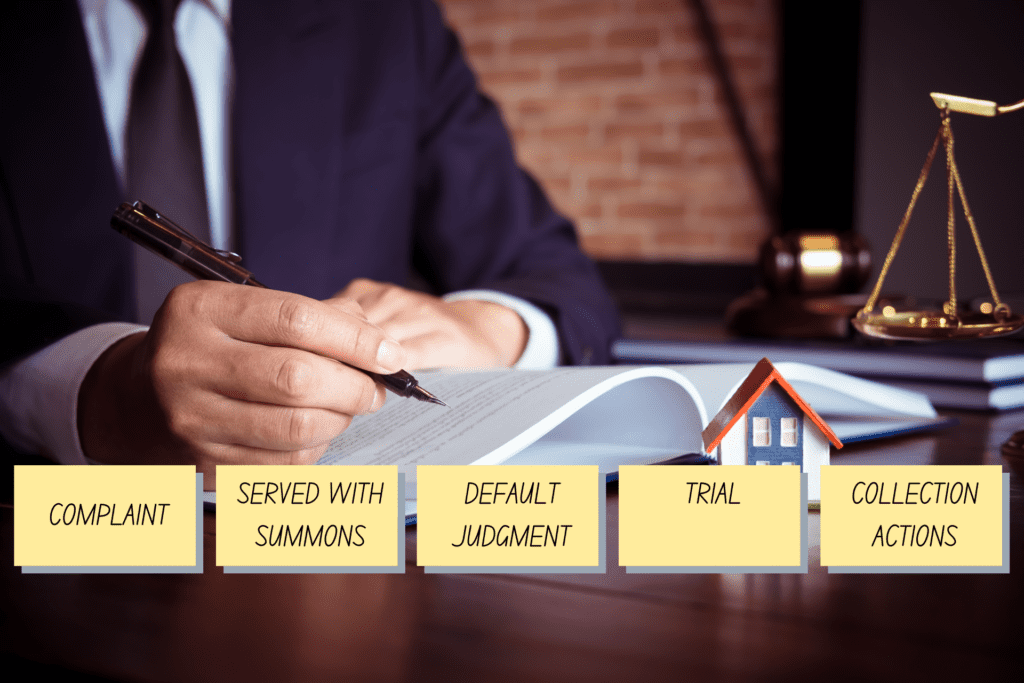
Here is an outline of the general procedure of a lawsuit.
First, the plaintiff files a COMPLAINT with the court. At the same time as filing the Complaint, the plaintiff will also present to the court a SUMMONS which will be stamped by the court clerk.
Second, the plaintiff will cause the defendant to be SERVED with the Summons and Complaint, and various other documents from the court.
Third, if the defendant does not RESPOND to the Complaint within the specified time period, the plaintiff will ask the court to issue a DEFAULT JUDGMENT against the defendant. With this JUDGMENT, the plaintiff can begin collection actions, such as wage garnishment or bank levy.
Fourth, if the defendant RESPONDS to the lawsuit, by filing the appropriate documents with the court, the plaintiff cannot get a default judgment. Instead, the matter will proceed forward, eventually being set for TRIAL.
Fifth, there are various procedures and activities that happen between the filing of the defendant’s answer and the trial. During these procedures, the case may either settle, or be disposed of without a trial by some type of motion. Statistically, only 2% to 5% of all lawsuits filed end up going to trial.
Sixth, at the time of trial, the plaintiff will present its evidence and argument and ask the court to rule in its favor. The defendant may also present evidence and argument to the court. If the court is persuaded that the plaintiff is correct, the court will then issue a JUDGMENT against defendant. The plaintiff can then begin collection actions.
The above has been excerpted from Mr. Crowder’s book, Lawsuit SURVIVAL 101, available for purchase here.
